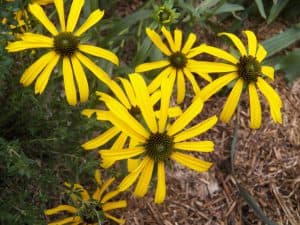
There something so simple and calming about the prairie. Growing up in north central Kansas, I knew too well the heat and drought of the plains states. Even in the shade of the wooded creek bottoms near our house, it was sultry and hot. Later, when I lived in Manhattan, KS, a quiet walk on the Konza Prairie became the essence of living. Native grasses and wildflowers swaying in the southwestern winds, dappled shade crisscrossing King’s Creek, and bur oaks growing in a nearby savannah created the sense of something great. Where the tallgrass sways in the wind is home! ©
As American settlers crossed the “great American desert” to get to the lush fields of milk and honey in Oregon, California, and Washington, they must have felt a sense of awe in this raw beauty that was the great prairies of the world. From Manitoba to Texas, and from Colorado to Illinois, this great prairie stretched in an endless sea of rushing waves. Only the waves were not water, it was a sea of grass, a life force constantly moving, and changing in the harsh climate. Eventually, farmers discovered a rich horizon under their wheels; black prairie soil, teeming with centuries of soil building nutrients, microbes, and insects. They plowed it up, not realizing the value they were losing.
Today America’s great prairie systems are gone. Only remnants of the former glory can be found amongst the crop fields of the nation’s heartland. The Tallgrass Prairie National Preserve, the Konza Prairie, Dakota Prairie Grasslands, Cimarron National Grasslands, and Thunder Basin National Grasslands are some of just a few left. Smaller, privately owned remnants can be found throughout the region, and restored prairies are becoming more popular. Restored prairies can also be found across the country. They are typically much smaller than remnants. Carpenter Nature Center along the St. Croix River in southeast MN has two restored prairies, both with exceptional plant species.
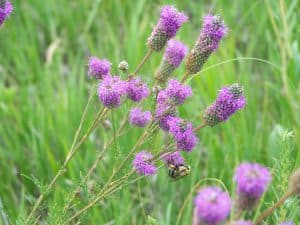
When we till the soil of our remaining prairies, we till a part of our souls. To destroy the diversity of the prairie, to try and hide it behind fences and let our cattle out to trample it is to give away that which is us. We are prairie people; our forefathers came to this land to find a better way of life. We need to reclaim that sense of peace and awe that they first felt at the sight of those vast prairies.
Recently, I have been changing over a part of my cottage garden landscape to native plants. Grasses and wildflowers make up my borders; I will add native trees and shrubs as I can afford to do so. In late spring, I visited the pasture land my grandparents owned, searching for flowers for my garden. I came across several wonderful natives, including Fremont’s clematis, Indian bread turnip, green antelopehorn milkweed, and pale purple coneflower. I was able to successfully transplant the Fremont’s clematis and I now have two growing in my border. Unless you have access to similar pasture, I would recommend starting with a nursery to get your plants. Luckily, there are many nurseries selling native plants that are more region specific.
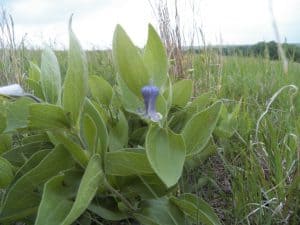
The first thing to think about when planning a native prairie garden is site and soil. The site needs to be in full sun, with at least 8 hours of sun daily. The soil should be well drained, but not sandy. A soil test kit can be obtained from your local extension office or nursery. Use natural amendments to correct pH and nutrients. Many prairie plants prefer a high pH soil; adding lime to the soil can raise the pH. Follow labeled directions when adding any amendments to the soil. Use composted manure, worm castings, or mushroom compost to improve the soil.
Planting a native prairie garden is a fun process. Remember to include at least three species of grasses in your plan. Without grasses, there is no prairie. Switchgrass, little bluestem, and prairie dropseed are three of the most commonly used grasses for home gardens. Good cultivars of switchgrass include ‘Heavy Metal’, ‘Shenandoah’, ‘Ruby Ribbons’, and ‘Northwind’. ‘The Blues’, ‘Blaze’, and ‘Carousel’ are great cultivars of little bluestem.
Selecting wildflowers for your native prairie garden can be tricky, there are many cultivars of some of the species, and no cultivars of others. The best way to begin is to contact your state’s native plant society, and find someone in your area to help. The following tables include the common and scientific names for some native prairie plants used in landscaping or found growing wild.
[message_box title=”Yellow Flowers” color=”yellow”]
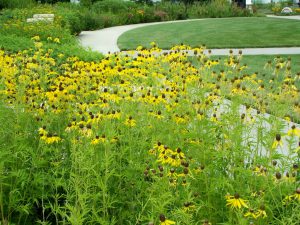
| Gray Headed Coneflower | Ratibida pinnata |
| Mexican Hat | Ratibida columnifera |
| Compassplant | Silphium laciniatum |
| Rosinweed | Silphium integrifolium |
| Canada Goldenrod | Solidago canadensis |
| Sawtooth Sunflower | Helianthus grosserratus |
| Missouri Black Eyed Susan | Rudbeckia missouriensis |
[/message_box]
[message_box title=”Red, Pink, or Orange Flowers” color=”red”]

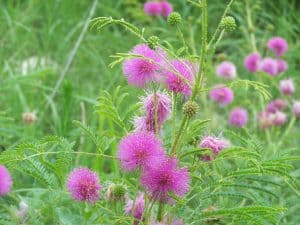
| Cardinal Flower | Lobelia cardinalis |
| Catclaw Sensitive Brier | Schrankia nuttallii |
| Button Blazingstar | Liatris aspera |
| Thickspike Gayfeather | Liatris pycnostachya |
| Pale Purple Coneflower | Echinacea pallida |
| Purple Prairie Clover | Dalea purpurea |
| Showy Milkweed | Asclepias speciosa |
| Swamp Milkweed | Asclepias incarnata |
| Butterfly Milkweed | Asclepias tuberosa |
[/message_box]
[message_box title=”Blue or Dark Purple Flowers” color=”blue”]
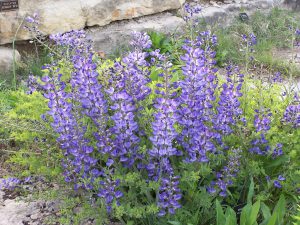
| Great Blue Lobelia | Lobelia siphilitica |
| Pitcher’s Sage | Salvia azurea |
| New England Aster | Symphyotrichum novae-angliae |
| Fremont’s Clematis | Clematis fremontii |
| Leadplant | Amorpha canescens |
| Blue Wild Indigo | Baptisia australis var. minor |
| Ohio Spiderwort | Tradescantia ohiensis |
[/message_box]
[message_box title=”White Flowers” color=”white”]
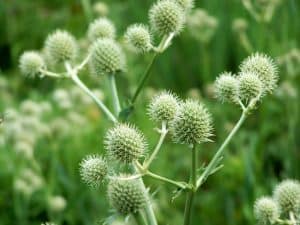
| Rattlesnake Master | Eryngium yuccafolium |
| Whorled Milkweed | Asclepias verticillata |
| White Prairie Clover | Dalea candida |
| Heath Aster | Symphyotrichum ericoides |
| Plains Larkspur | Delphinium virescens |
| Stenosiphon | Stenosiphon linifolius |
| Cream Wild Indigo | Baptisia lactea |
[/message_box]
[message_box title=”Grasses” color=”green”]

| Switchgrass | Panicum virgatum |
| Little Bluestem | Schizachyrium scoparium |
| Prairie Dropseed | Sporobolus heterolepsis |
| Purple Lovegrass | Eragrostis spectabilis |
| Indiangrass | Sorghastrum nutans |
| Blue Grama | Bouteloua gracilis |
[/message_box]
These are just a small sampling of the prairie plants out there to use in your gardens. Join your local native plant society and enjoy the ride!
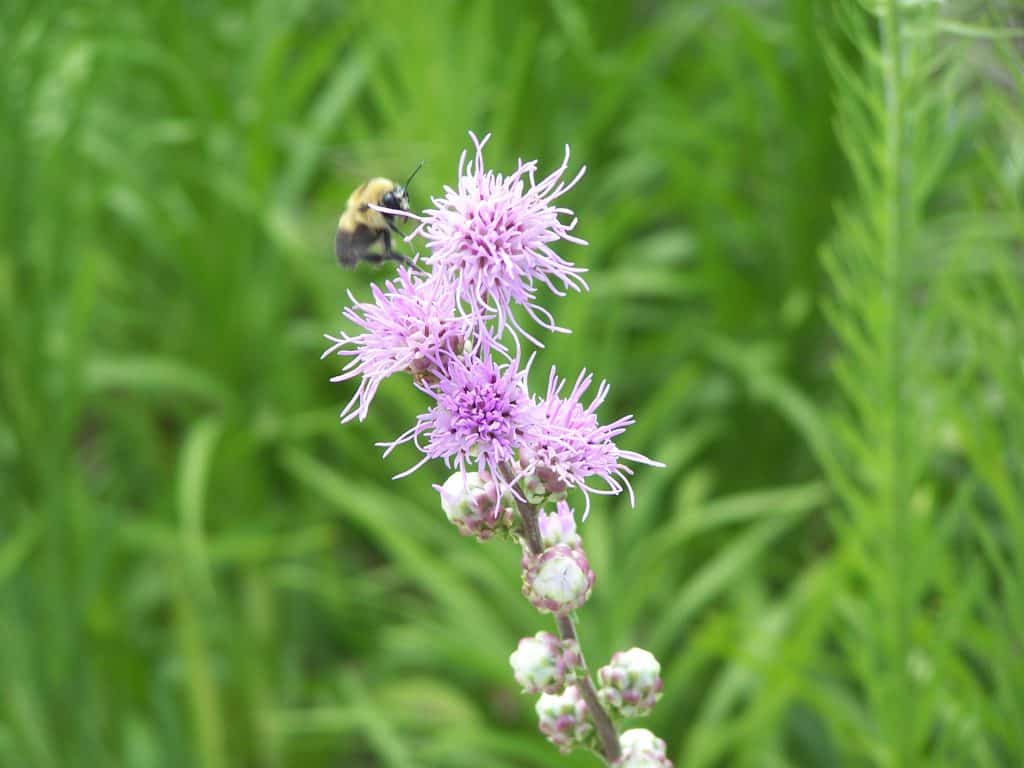



Great article! I’ve been looking for a comprehensive list of native species to make bee and monarch friendly seed bombs. This is very helpful 🙂